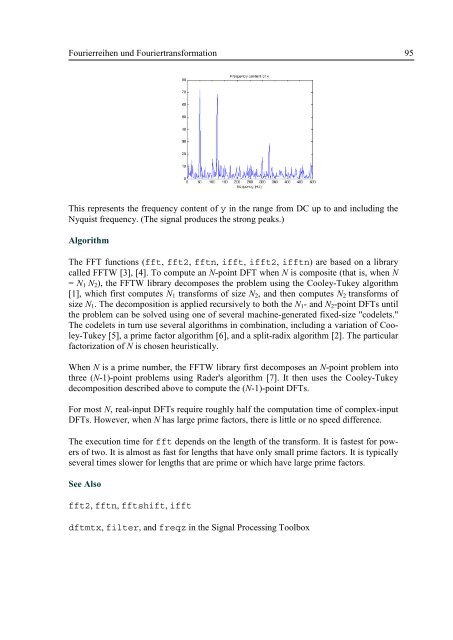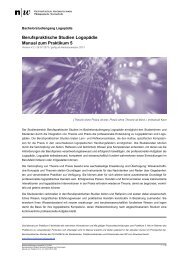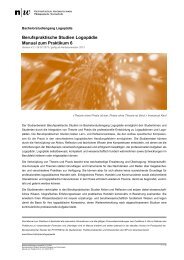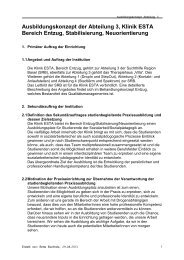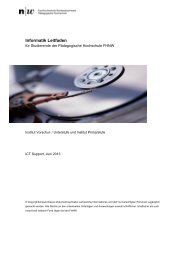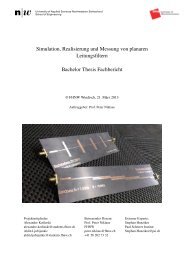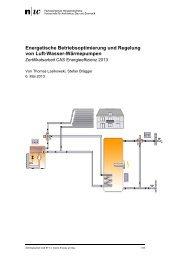Fourierreihen und Fouriertransformation - Fachhochschule ...
Fourierreihen und Fouriertransformation - Fachhochschule ...
Fourierreihen und Fouriertransformation - Fachhochschule ...
Erfolgreiche ePaper selbst erstellen
Machen Sie aus Ihren PDF Publikationen ein blätterbares Flipbook mit unserer einzigartigen Google optimierten e-Paper Software.
<strong>Fourierreihen</strong> <strong>und</strong> <strong>Fouriertransformation</strong> 95<br />
This represents the frequency content of y in the range from DC up to and including the<br />
Nyquist frequency. (The signal produces the strong peaks.)<br />
Algorithm<br />
The FFT functions (fft, fft2, fftn, ifft, ifft2, ifftn) are based on a library<br />
called FFTW [3], [4]. To compute an N-point DFT when N is composite (that is, when N<br />
= N 1 N 2 ), the FFTW library decomposes the problem using the Cooley-Tukey algorithm<br />
[1], which first computes N 1 transforms of size N 2 , and then computes N 2 transforms of<br />
size N 1 . The decomposition is applied recursively to both the N 1 - and N 2 -point DFTs until<br />
the problem can be solved using one of several machine-generated fixed-size "codelets."<br />
The codelets in turn use several algorithms in combination, including a variation of Cooley-Tukey<br />
[5], a prime factor algorithm [6], and a split-radix algorithm [2]. The particular<br />
factorization of N is chosen heuristically.<br />
When N is a prime number, the FFTW library first decomposes an N-point problem into<br />
three (N-1)-point problems using Rader's algorithm [7]. It then uses the Cooley-Tukey<br />
decomposition described above to compute the (N-1)-point DFTs.<br />
For most N, real-input DFTs require roughly half the computation time of complex-input<br />
DFTs. However, when N has large prime factors, there is little or no speed difference.<br />
The execution time for fft depends on the length of the transform. It is fastest for powers<br />
of two. It is almost as fast for lengths that have only small prime factors. It is typically<br />
several times slower for lengths that are prime or which have large prime factors.<br />
See Also<br />
fft2, fftn, fftshift, ifft<br />
dftmtx, filter, and freqz in the Signal Processing Toolbox


